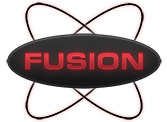Non-Corrosive Fluxes
See chart below. Fluxes are classified as Non-Corrosive when their residue after soldering will not corrode and eventually destroy the joint if allowed to remain. Generally incorporating a rosin base, these fluxes contain mild organic acids which are neutral at room temperature but become slightly acidic upon heating. Neutral, rosin fluxes are particularly useful in electrical applications, where their non-conductive, non-corrosive residue may be safely left on the assemblies.
Intermediate Fluxes
See chart below. These fluxes usually consist of mild organic salts, with considerably stronger fluxing action than non-corrosive types. Residue after soldering is normally not harmful to the soldered joint. However, residue should be removed whenever possible, as moisture in the atmosphere may initiate corrosion.
Corrosive Fluxes
See chart below. Most corrosive fluxes contain active inorganic acids and salts. Due to their increased strength and ability to quickly remove surface oxides, these fluxes are ideally suited to high-speed, automated soldering operations. Although corrosive fluxes generally produce the most reliable soldered joints, their residue after soldering must be removed, or it will eventually attack and destroy the joint.
Fusion Solder Flux/Binder Systems
| Fusion System | Key Flux/Binder Properties | Base Metal Compatibility | |||||||
| Flux Activity Range (typical) | Restrictive Level | Residue | Residue Removal | Brass | Copper | Stainless | Cold Roll | Other | |
| Flux Class: Non-Corrosive | |||||||||
| GPR | 300-525°F (149 – 273°C) | Fair Spread – alloy / process dependent | Non-Corrosive | Organic solvent / hydrocarbon solvent | Y | Y | N | N | LT |
| MBC | 300-595°F (149 – 313°C) | Fair Spread – alloy / process dependent | Non-Corrosive | Organic solvent / hydrocarbon solvent | Y | Y | N | N | LT |
| LPS | 300-525°F (149 – 273°C) | Very Restrictive | Non-Corrosive | Organic solvent / hydrocarbon solvent | Y | Y | N | N | LT |
| Flux Class: Intermediate | |||||||||
| WC | 300-525° F (149 – 273°C) | Restrictive | Moderately Corrosive | Hot Water / Detergent | Y | Y | Y | Y | LT |
| PWC / PMS Family | 300-525°F (149 – 273°C) | Very Restrictive | Moderately Corrosive | Organic solvent / hydrocarbon solvent | Y | Y | LT | Y | LT |
| PA / PAD / PAN Family | 125-525°F (52 – 273°C) | Very Restrictive (PA) Moderately Restrictive (PAN/PAD) | Moderately Corrosive | Hot Water / Detergent | Y | Y | LT | LT | LT |
| SUN | 300-525°F (149 – 273°C) | Moderately Restrictive | Low Corrosivity | Hot Water / Detergent | Y | Y | LT | LT | LT |
| Flux Class: Corrosive | |||||||||
| SFC, FCC, 2JN, SMH Family | 300-600°F (149 – 316°C) | Moderately Restrictive (SFC, FCC, 2JN) Very Restrictive (SMH) | VeryCorrosive | Detergent Water / mild acid | Y | Y | Y | Y | LT |
| PPP, SSX, SSE Family | 300-600°F (149 – 316°C) | Restrictive | Very Corrosive | Detergent Water / mild acid | Y | Y | Y | Y | LT |
| WCC, WCE, WCS Family | 300-600°F (149 – 316°C) | Moderately Restrictive | Moderate to Very Corrosive | Detergent Water / mild acid | Y | Y | Y | Y | LT |
Y = Common use
N = Not typically recommended
LT = Lab testing required (Depends on base metal, filler metal, and solder process)
For more details on the above products, download our Paste Brazing Brazing & Soldering Alloys brochure.
USA: (440) 946-3300
EUROPE: +44 (0) 1279 443 122
Find Your Fusion Rep: USA | AMERICAS | EUROPE | ASIA-PACIFIC
Fusion Equipment in Action: Applications & Videos >>


